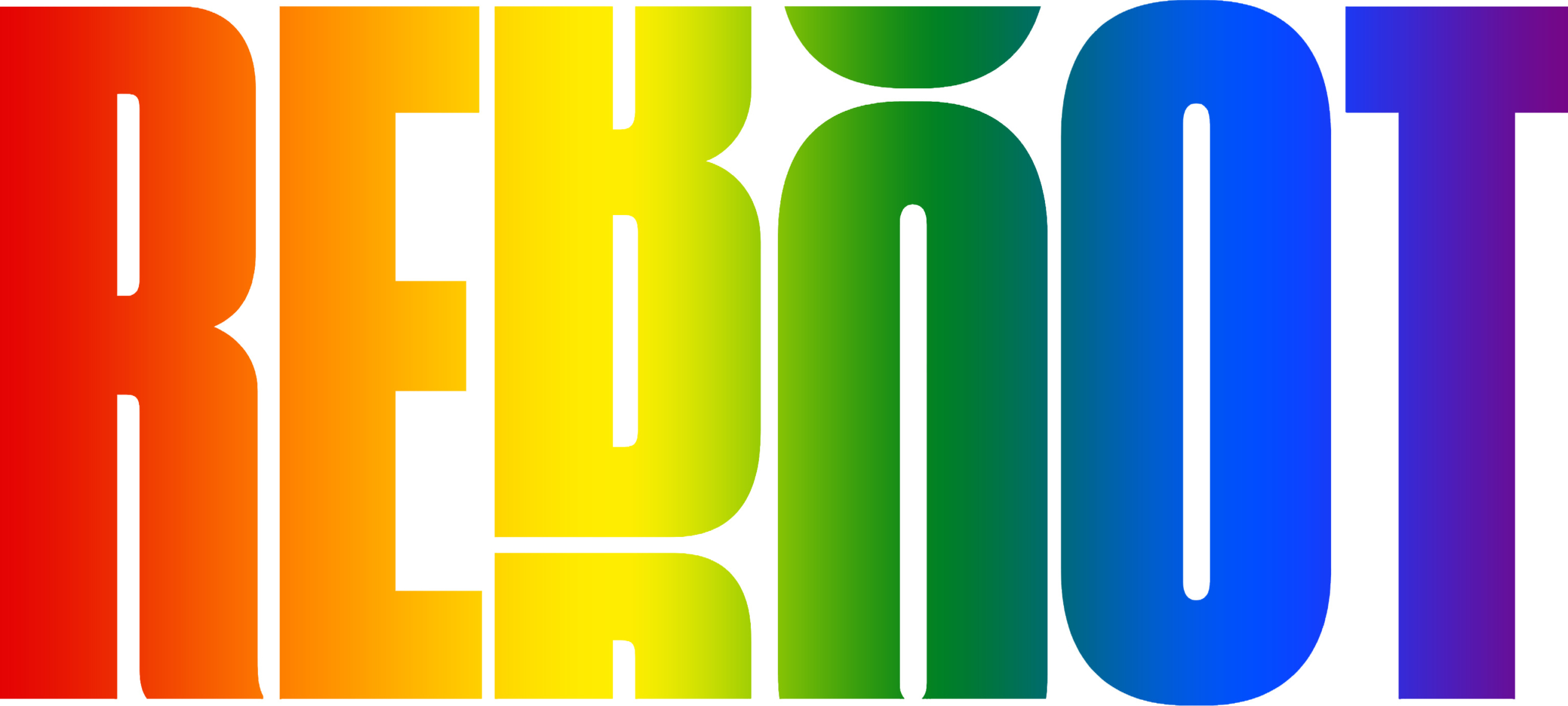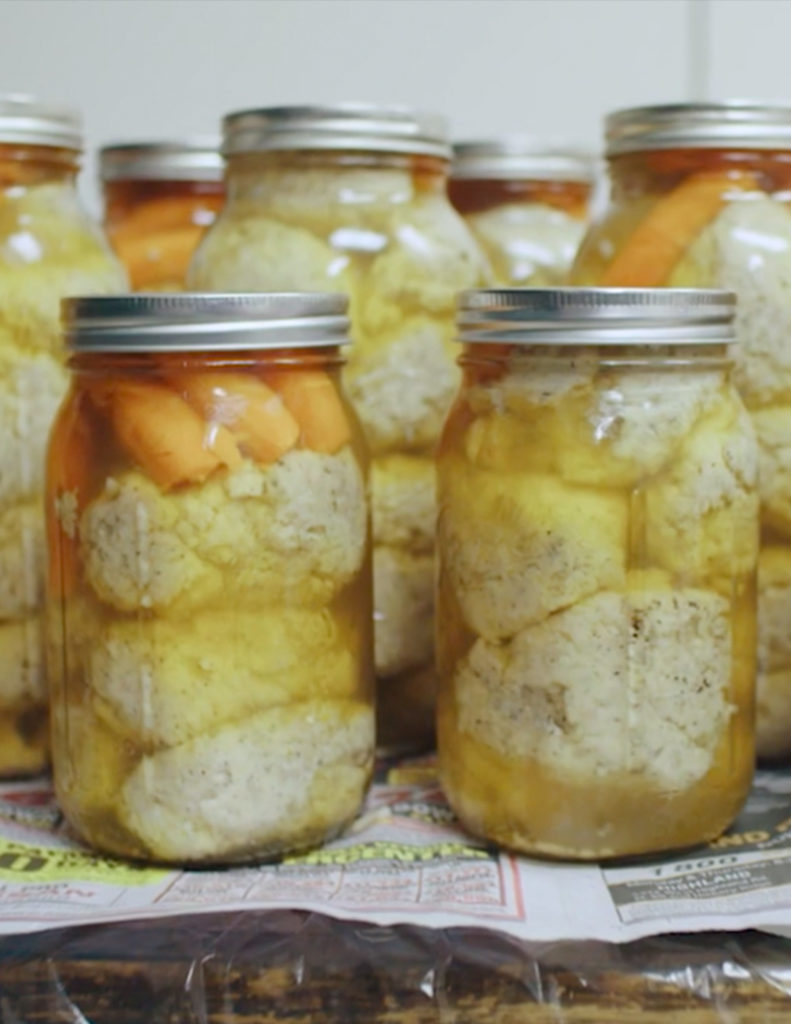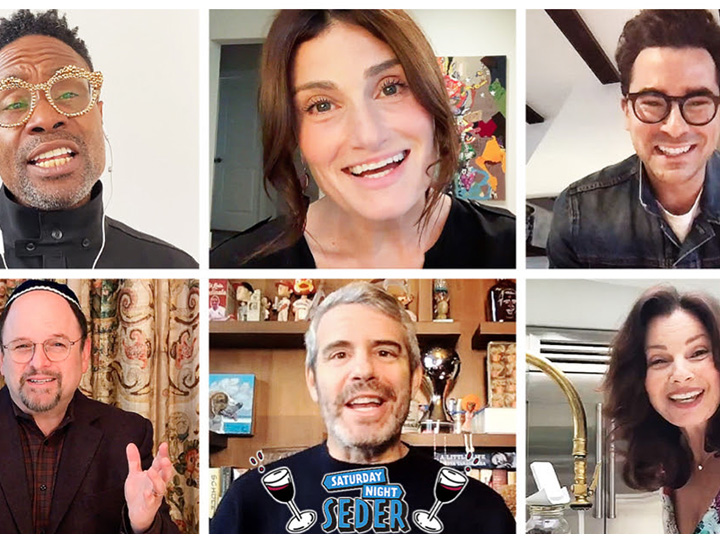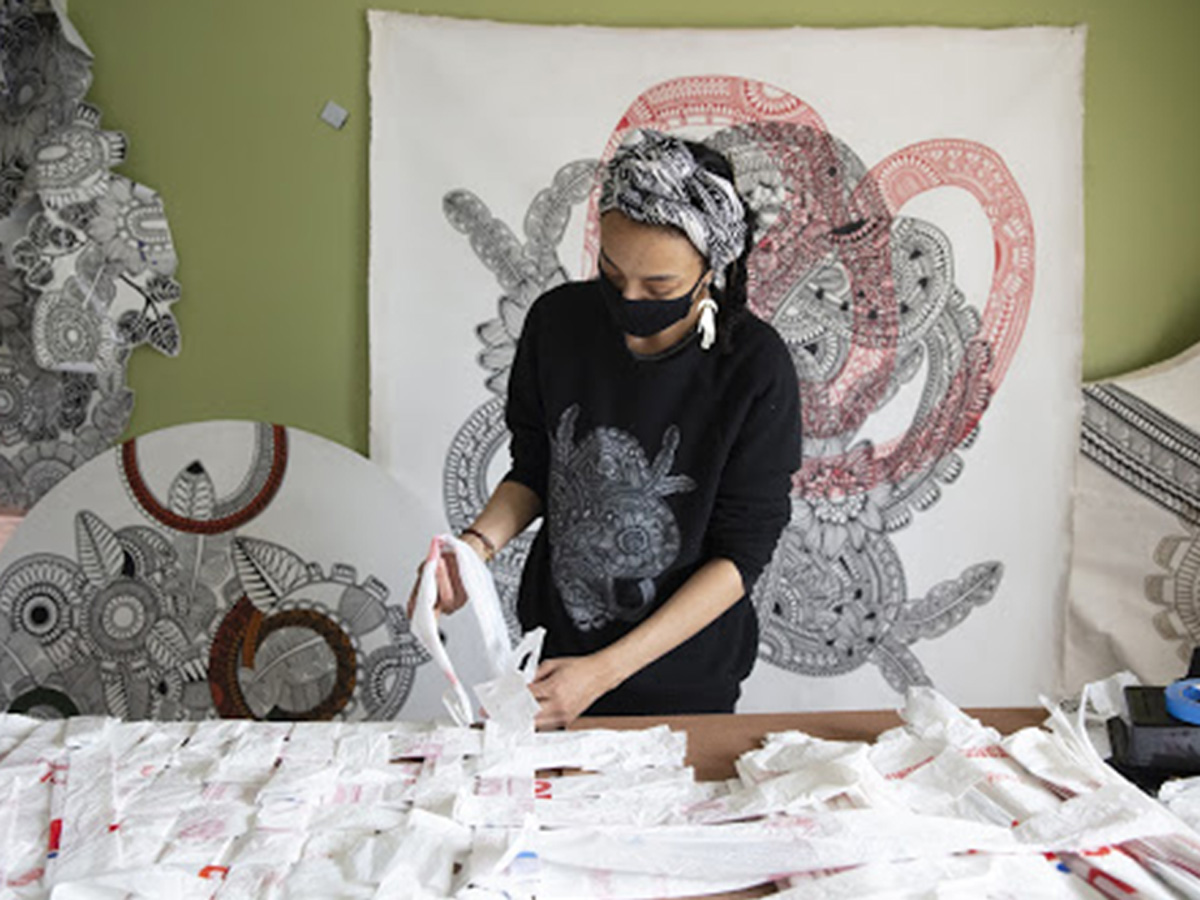The Magical Post-Passover Tradition of Mimouna
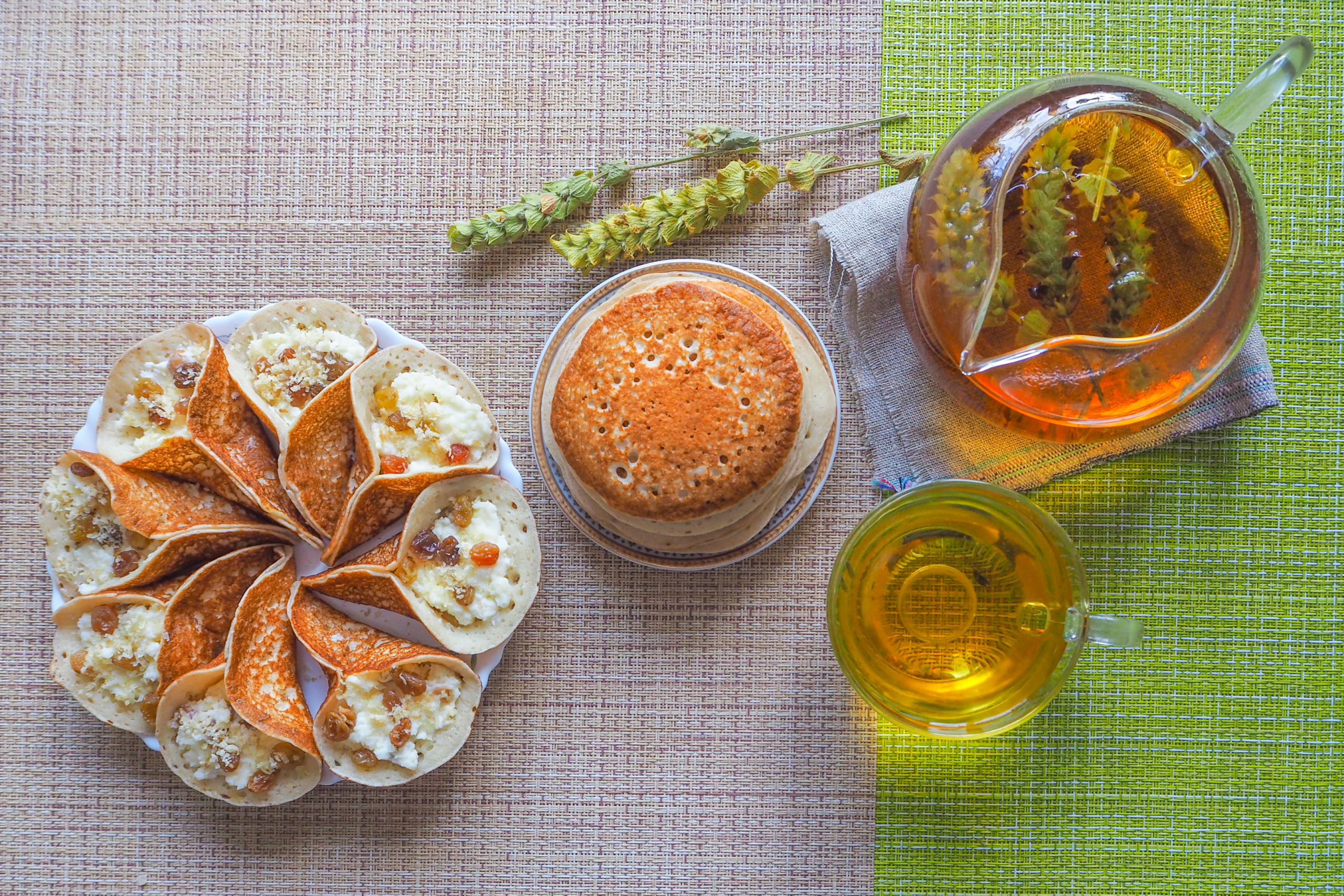
I’m not proud of it, but as a twenty-something adult, there came a moment when I “gently” pushed young children aside to secure my place first in line for a remarkable opportunity. In my defense, that opportunity came in the form of thin, glorious, Moroccan pancakes that were served as soon as the Passover food prohibitions were lifted.
On the night Passover ends, some Jews around the world return to chametz with an innocuous slice of pizza or a quick noodle dish from a local restaurant. But Jews of Moroccan heritage enjoy what may arguably constitute the most magical night of the year: the festival of Mimouna. And the culinary star of each Mimouna table spread is moufleta, a crêpe-like pancake made with flour, water and oil and enjoyed warm with honey and butter. As a Persian Jew who had not celebrated Mimouna before, it was the lure of that delicacy that forced me to cut in line ahead of children at the LA house of a friend who had brought his family’s delicious traditions from the Maghreb to West L.A.
Mimouna, whose namesake may be a combination of “ma’amoun” (good fortune in Arabic) and “emunah” (faith in Hebrew), dates back to sixteenth-century Morocco. The name may also be rooted in Rabbi Maimon, the father of the Moroccan-born Jewish sage Maimonides (known as the Rambam), who died the day after Passover.
It was not uncommon for Moroccan Jews to give away their flour to their Muslim neighbors before Passover. But on the night Passover ended, where would Jews find flour to prepare Mimouna delicacies such as moufletot and sweet pastries? The souks (outdoor bazaars) weren’t open and their Jewish neighbors didn’t possess flour, either. That’s the beautiful part of Mimouna: Most Moroccan Jews would receive flour as a gesture of goodwill from Muslim neighbors, some of whom would visit Jewish homes and be treated to sweets. If only this tradition would continue today, from Jerusalem to Ankara; from Detroit to Berlin, as a gleaming light in a world rife with growing cultural and religious divisions. I can imagine an apartment complex in New York City in which some Muslim neighbors offer their Jewish neighbors flour at Passover’s end, and are invited inside for sweets and neighborly connections.
Today, Mimouna is still celebrated by Moroccan Jewish communities, from Israel, France, the United States and Canada to Morocco itself, which is still home to nearly 3,000 Jews. Moroccan Jews (and Jews of Moroccan descent) constitute nearly one million Israelis, which may explain why Mimouna has been embraced as a national holiday in the country. If you can visit Israel in the spring and attend a Moroccan Mimouna celebration the night Passover ends, it will be one of the most vibrant and lively highlights of your visit.
In Morocco, dozens of family members and neighbors crowd homes during Mimouna; it is almost akin to bar-hopping, except that rather than visiting bars, one enters many Jewish homes and is promptly treated to a sprinkling of flour on the forehead (a symbol of prosperity) and a joyous embrace. The celebrations continue to the next day; in Israel, they include festive outdoor barbecues.
“Mimouna is the most cherished celebration from my upbringing, and the one that I am most proud to continue celebrating today,” Rabbi Daniel Bouskila, director of the Sephardic Educational Center, which has offices in Los Angeles and Jerusalem, told me. “Its message of blessings, neighborly relations, inclusion and sweetness is a counter to the individualized lifestyle many have adopted today. I’ve never heard of or seen any other celebration like it, where we open our doors to everyone – neighbors, friends, Jews, non-Jews – without formal invitations. We eat, dance, sing and greet each other with warmth and smiles. No trauma, no stories of persecution, just a Judaism of warmth and sunshine. It doesn’t get any better.”
The warm greetings during Mimouna have remained the same for centuries: “Terbach” or “Tirbah u’tissad,” which roughly translate to “May you win and have good luck.” The Mimouna table spread highlights the number five, a symbol of protection (think about the five fingers of the traditional hamsa). These include five silver coins; five fava beans; five dates; five gold bracelets, and so on. Mimouna also celebrates several uplifting themes, namely fertility and good fortune. Under the spell of moonlight, spring and renewal of life, Mimouna is viewed as the most auspicious time of the year to meet someone and fall in love.
In an April 2007 column called “The Magic of Mimouna,” David Suissa, the publisher and editor-in-chief of the Jewish Journal, who was born and raised in Casablanca, wrote, “It was a night when doors and hearts were open, and young men and women, dressed in their finest, would move and mingle like butterflies from one party and sweet table to another.”
In a world that offers instantaneous modern technology, as well as fleeting social connections due to a devastating pandemic, Mimouna is like a balm for the soul. For many Jews worldwide (myself included), the night Passover ends results in immediately (and often, mindlessly) consuming whatever chametz one acquires, checking email, browsing social media, and falling asleep.
But for those who attend Mimouna celebrations big and small, from L.A. and New York City to Tel Aviv and Marrakesh, it is a chance to patiently escort Passover’s end, as if gracefully holding the train of a bride’s wedding dress as she departs a room. Mimouna can be held anywhere, from a small apartment to an outdoor terrace or a synagogue hall, as long as the magic of loved ones, neighbors, renewal and a few moufletot are in the air.
While some non-Moroccan Jews, including synagogue leaders, have begun to host Mimouna festivities, millions of Jews, particularly those in the Diaspora, still do not know about this important tradition. This signals an undeniable gap in knowledge about diverse Jewish communities and their wonderful customs.
This year, my children received a charming PJ Library book titled A Sweet Meeting on Mimouna Night, written by Allison Ofanansky and beautifully illustrated by Rotem Templow. The book tells the story of a Jewish girl in Morocco named Miriam, and the friendship that blooms between her and a Muslim neighbor, Jasmine, thanks to the wonder of Mimouna. It is a treasured thread in the tapestry of Jewish diversity that I continuously weave for my children so that they may understand the precious endurance of our people. A Sweet Meeting on Mimouna Night joins another new and already cherished children’s picture book in our home, titled A Persian Passover by Etan Basseri. As Iranian American Jews, my family and I have delighted in learning about diverse Jewish traditions, and also seeing ourselves in mirror-reflections on paper. My next goal? Learning how to make Moroccan moufletot, and, in true Persian style, topping them off with chopped pistachios and carrot-rosewater jam.
May you have a meaningful Passover and a year of tremendous good fortune and prosperity.
Tirbah u’tissad!
 Tabby Refael is a Los Angeles-based writer, speaker and civic action advocate. Since 2019, she has served as a weekly editorial columnist for The Jewish Journal of Greater Los Angeles, writing about topics related to Iran, Israel, women’s rights, Jewish identity and Mizrahi advocacy and representation. She has also written for Newsweek, Los Angeles Magazine, Moment Magazine and White Rose Magazine. Tabby served as a former executive director and co-founder of 30 Years After, which promotes the participation and leadership of Iranian American Jews in American civic, political and Jewish life. Born in Iran after the Islamic Revolution, Tabby fled the country with her family and was granted refugee asylum in the United States.
Tabby Refael is a Los Angeles-based writer, speaker and civic action advocate. Since 2019, she has served as a weekly editorial columnist for The Jewish Journal of Greater Los Angeles, writing about topics related to Iran, Israel, women’s rights, Jewish identity and Mizrahi advocacy and representation. She has also written for Newsweek, Los Angeles Magazine, Moment Magazine and White Rose Magazine. Tabby served as a former executive director and co-founder of 30 Years After, which promotes the participation and leadership of Iranian American Jews in American civic, political and Jewish life. Born in Iran after the Islamic Revolution, Tabby fled the country with her family and was granted refugee asylum in the United States.
